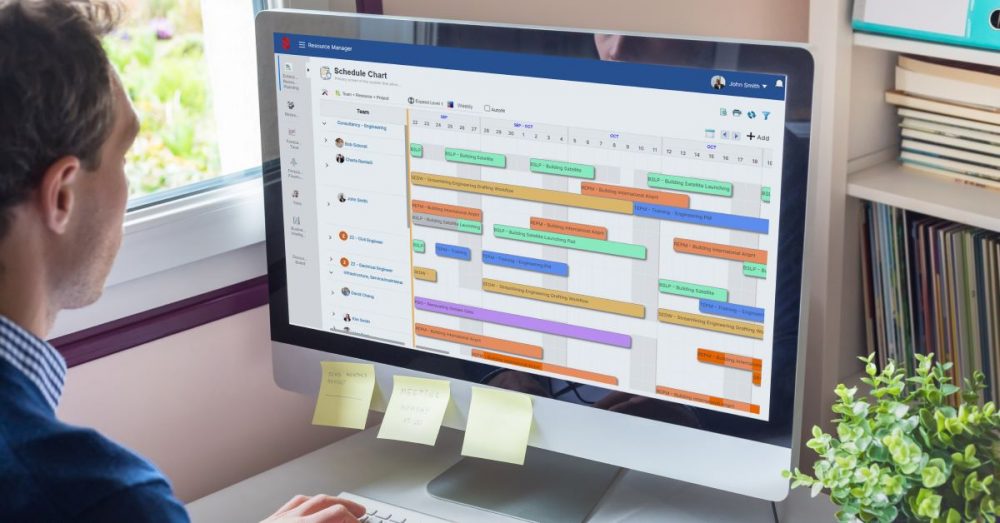“CEOs with high delegator talent generated 33% greater revenue, i.e., $8 million, than those with low or limited levels of the talent”. – Gallup
The above stat indicates how vital delegation is for firms to achieve positive business outcomes. When a manager delegates tasks to the team members, they are held responsible and accountable for maintaining the project quality. It instills a sense of ownership and inspires them to work harder and more sincerely, reducing the possibility of errors.
In addition, delegating work frees up a manager’s workload for more strategic activities while providing opportunities for growth and learning for team members. Therefore, mastering the art of delegation is the need of the hour as it will lay the foundation for effective leadership and better organizational efficiency.
This blog discusses the effective strategies to delegate tasks and how SAVIOM‘s resource management solution can assist in its implementation.
But first, let’s start with the basics.
1. What is delegation and its various elements?
Delegation refers to transferring responsibilities or assigning tasks to skilled team members or subordinates suited to perform them. This increases their productivity and efficiency, which in turn will ensure the timely delivery of projects.
Three primary elements encapsulate delegation:
1.1. Authority – Authority refers to a manager’s power to instruct employees to perform specific tasks within their scope of responsibilities. This includes decision-making powers, allocating resources, and taking responsibility for delegated tasks’ outcomes.
1.2. Responsibility – Employees who have been given the task have the ‘responsibility’ to accomplish it within the deadline and quality. This includes accountability for the task’s success or failure.
1.3. Trust: Trust is a critical element of delegation. The delegator must trust that the resource can complete the task responsibly and reliably.
1.4 Communication: The manager must communicate the task, including its objectives, timeline, and expectations, to ensure successful delivery.
By considering these elements of delegation, individuals, and organizations can effectively delegate tasks and responsibilities to others, resulting in improved performance and increased productivity.
Now that we know the nitty gritty of delegation, let’s understand the different ways to effectively delegate work to employees.
2. Ways to delegate responsibility to the workforce
According to a statistic, “only 30% of managers believe they are good at delegating”.
However, by implementing the strategies mentioned below, managers can improve their delegating skills and achieve better results.
2.1. Enlist the tasks/sub-tasks in a project
Before starting the delegation process, managers should first create a well-defined project plan and enlist the tasks/subtasks that are required to be completed. This roadmap enables managers to identify the right tasks that can be delegated between resources.
For example, strategic activities can be delegated to skilled experts who can deliver projects without compromising quality, while admin tasks can be given to junior resources. On the other hand, urgent tasks that require immediate attention can be given to resources with extra capacity. This clear breakdown makes the delegation process more organized, leading to greater efficiency and success.
2.2. Identify and allocate competent resources
When managers fail to delegate the right task to the right people, it can lead to disengagement, lower productivity, and hamper project delivery. Therefore, it becomes imperative for managers to identify resources based on their attributes, such as skill set, knowledge, experience, etc., and then do resource allocation.
However, if the required resources are unavailable, organizations can take several steps to acquire the necessary skills and competencies.
Firstly, they can leverage internal channels like conducting training/upskilling programs. Alternatively, firms can also go for planned hiring. This way, the right resources will be available before the project’s onset, ensuring successful delivery of projects.
Read Also: Key Factors That Lead to IT Project Failures
2.3. Outline the level of authority for all team-members
Defining the level of authority for all team members is an integral part of the delegation process. It helps everyone understand their responsibilities and the extent and limits of their authority. By delegating authority and power linked directly to their job, managers can empower their subordinates to accomplish their tasks with greater independence.
For instance, in an AEC project, the supervisor delegates a senior architect to review the designs submitted by junior architects before final approval. This not only streamlines the review process but also empowers the senior architect to take on a more active role in the decision-making process. Also, as they have autonomy, it makes them feel motivated to work and gives them a sense of purpose in the firm.
2.4. Provide clear guidance and support when required
While delegating tasks, managers need to convey the project scope, objectives, and deliverables to team members. This helps the subordinates understand the project interdependencies and their respective responsibilities. In addition, the managers must provide the necessary training and tools to support the team members during execution.
They must also foster a transparent communication channel for effective collaboration. This will help resolve unexpected risks and gain real-time updates about project progress.
Moreover, they can create an open-door policy to address any job-related ideas or issues. This will strengthen employee-employer relationships, encourage healthy discussions, and make the workplace more productive.
See Also: 200+ Best Creative Team Names for Workplace
2.5. Monitor workforce’s performance and offer constructive feedback
Project managers play a crucial role in ensuring that the project’s end goal meets the client’s expectations. To achieve that, even after delegation, they must monitor the project’s progress and track utilization levels of employees to ensure they are neither under/overutilized.
In addition, they must also provide constructive feedback to employees regularly. This will assist team members in identifying areas for improvement and developing strategies to enhance their performance. Thus, ensuring successful project completion and client satisfaction.
Now, let’s understand how a resource management tool can be useful in implementing the above strategies.
See Also: 25 Best Task Management Software in 2024
3. How can advanced resource management software help delegate tasks?
With the adoption of matrix organizations and increasing project complexity due to technological advancements, it has become challenging for managers to delegate tasks properly. This is where modern ERM software comes into the picture.
• The tool’s 360-degree visibility feature and advanced filters help organizations get a bird’s eye view of the workforce’s skills, location, availability, and other attributes, allowing managers to identify the best-fit resources and delegate work accordingly.
• Further, the software’s forecasting capabilities and capacity-vs-demand report help managers identify the demand gap and take necessary actions in advance to mitigate it.
• Additionally, the forecast-vs-actual report and utilization reports procured in real-time assist in optimizing the delegation process by providing valuable insights into workforce utilization levels.
• Apart from this, the what-if scenario enables managers to create and compare various project scenarios and determine the best-fit resource plan. This enables managers to select the ideal resource plan and make informed decisions related to delegation.
Conclusion
Effective delegation is the key to smooth operations in a business. With the above-mentioned practices coupled with the right resource management tool, managers can effectively delegate responsibilities among employees. This will also help to complete the tasks successfully without any bottlenecks, increasing the firm’s profitability and sustainability.








